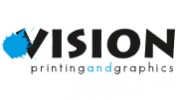The offset printing technique transfers an inked image onto a metal plate, then transfers that image to an intermediary surface such as a rubber blanket, and gets applied to paper by pressing the paper against the intermediary surface. Sending an image directly to the printer via digital files such as PDFs and those from graphics software such as Illustrator and InDesign. From simple slits on a pocket folder to elaborate pop-up models, die cutting offers unlimited possibilities to design projects.
Services
4-Color Process
Report
4-color process printing is valuable because studies have shown that the use of color in print materials increases readership and information retention between 40%-65%. Our process involves taking a color image and separating it into 4 different color values (called a color separation) by the use of filters and screens.
Pms Spot Color
Report
Some colors cannot be reproduced in the four color process. In order to get a consistent match we must specify and print colors where each color is printed with its own ink. These are colors created without screens or dots as found with the Pantone Matching System They are derived from a palette of 14 basic colors with each spot color being mixed according to its own ink mixing formula as developed by Pantone.
Coatings
Report
Print coatings help protect the integrity of the ink on the page and keeps it from scratching and fingerprinting. Of the various types of coating we use what is known as aqueous coating. Basically, it acts as a clear liquid shield on your printed piece. It's durable and doesn't crack or scuff easily.
Full Color
Report
Digital technology is continuing to improve. This technology allows us to print high quality images in full color in smaller quantities. Once sent to these printers you get a high resolution, full color, quality image that can rival many professional, offset printers. This is great when you need a smaller print job such as brochures, postcards, presentations or reports.
Reviews

Be the first to review Visual Graphics.
Write a Review


